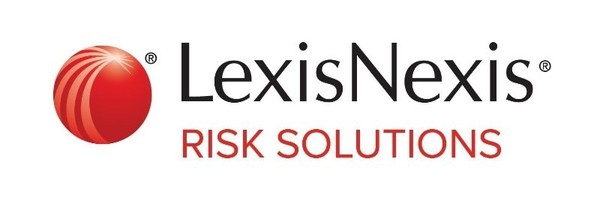 |
ATLANTA, Sept. 16, 2020 /PRNewswire/ -- LexisNexis® Risk Solutions today released its biannual Cybercrime Report, which tracks global cybercrime activity from January 2020 through June 2020. The report analyzes how the COVID-19 pandemic has impacted the global digital economy, regional economies, industries, businesses and consumer behavior. The period has seen strong transaction volume growth compared to 2019 but an overall decline in global attack volume. This is likely linked to growth in genuine customer activity due to changing consumer habits.
The LexisNexis Risk Solutions Cybercrime Report analyzes data from more than 22.5 billion transactions processed by the LexisNexis® Digital Identity Network®, a 37% growth year over year. Mobile device transactions also continue to rise, with 66% of all transactions coming from mobile devices in the first half of 2020, up from 20% in early 2015. The Digital Identity Network® also notes an uptick in transactions from new devices and new digital identities. We attribute this to many new-to-digital consumers moving online to procure goods and services that were no longer available in person or harder to access via a physical store, during the pandemic.
The Asia-Pacific (APAC) region saw higher attack rates than the global average, 3% compared to 1.4% globally. Attack rates also grew during both April and May and experienced a large spike in June through an identity spoofing bot attack from the Philippines, which targeted a payment gateway. However, attack rates in APAC declined across all channels year over year. The only exception was a 9% growth in automated bot attacks in the region, although this growth is still lower than the global average of 13%.
APAC continues to experience higher attack rates than North America or EMEA. The Digital Identity Network found significant bot activity coming from Japan, India and Australia. They now rank fifth, seventh and eighth respectively as some of the largest originators of automated bot attacks by volume globally. Japan appears to be a particular hotspot: The country recorded the largest growth in bot attack originations year over year and is now one of the top ten largest contributors to human-initiated cyberattacks by volume.
Hyper-connected, networked fraud continues to be a key feature of attacks. One example of an Australian fraud network saw groups of fraudsters targeting the financial services, e-commerce and media sectors. This single network consisted of 2,400 devices, 3,700 email addresses and 1,500 telephone numbers, and at least $800,000 USD was exposed to fraud across the entire network.
Additional Key Findings from the LexisNexis Risk Solutions Cybercrime Report:
"This is the first LexisNexis Risk Solutions Cybercrime Report to include data on the new reality of conducting business during a pandemic," said Rebekah Moody, director of fraud and identity at LexisNexis Risk Solutions. "The move to digital, for both businesses and consumers, has been significant. Yet with this change comes opportunity for exploitation. Fraudsters look for easy targets: whether government support packages, new lines of credit or media companies with fewer barriers to entry. We need to ensure that all consumers, especially those who might be new to digital, are protected. Businesses must arm themselves with a layered defense that can detect the full spectrum of possible attacks and is future-proofed against evolving threats."
"Fraudsters remain masters of disguise. They operate alone and in highly connected groups to build up huge networks of cross-industry and regional fraud. This is a particularly acute issue in the APAC region, where we see the highest global attack rates," added Cameron Church, director of fraud and identity at LexisNexis Risk Solutions. "We must identify and block fraudsters - whether opportunists or highly networked fraud rings - the moment they transact. Knowledge sharing must be as pivotal to global businesses as it is to the cybercriminals that attack them."
Download a copy of the LexisNexis Risk Solutions Cybercrime Report, January through June 2020 (English only.) Join Rebekah Moody, director of fraud and identity at LexisNexis Risk Solutions, for an overview of the latest Cybercrime Report on Wednesday, September 16 at 2:00pm HKT (English only).
About LexisNexis Risk Solutions
LexisNexis® Risk Solutions harnesses the power of data and advanced analytics to provide insights that help businesses and governmental entities reduce risk and improve decisions to benefit people around the globe. We provide data and technology solutions for a wide range of industries including insurance, financial services, healthcare and government. Headquartered in metro Atlanta, Georgia, we have offices throughout the world and are part of RELX (LSE: REL/NYSE: RELX), a global provider of information-based analytics and decision tools for professional and business customers across industries. For more information, please visit www.risk.lexisnexis.com and www.relx.com.
Media Contact:
Marcy Theobald
678.694.6681
Marcy.Theobald@lexisnexisrisk.com
Logo - https://mma.prnasia.com/media2/494562/LexisNexis_Risk_Solutions_Logo.jpg?p=medium600